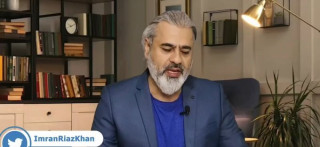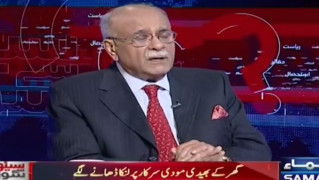The National Assembly, on May 29, 1997, amended the Ehtesab Ordinance to introduce major changes in the accountability process. The most significant amendment was the shifting of the starting date for accountability from the original 31st December 1985 (when General Zia lifted the martial law) to 6th August 1990 (when the first government of Benazir Bhutto was dismissed). The amendment also transferred the power of investigating charges of corruption from the Chief Ehtesab Commissioner to the Ehtesab Cell set up by Prime Minister Nawaz Sharif. "The Ehtesab Bill steam-rolled through the National Assembly makes a mockery of accountability. The amendments incorporated in the bill before it was presented in parliament for adoption render it an extremely flawed piece of legislation." (1)
Although the amendment excluded the first Benazir government from the purview of accountability but the exemption for the 1985-90 period is significant since it was during this period that Mr. Nawaz Sharif, in his capacity as the Chief Minister of the Punjab, was strengthening and consolidating his industrial and political base. At the time of passage of the Ehtesab Law, there were reports that there were 167 cases of major loan default which include 107 cases involving top leaders of the PML(N) who got the benefit of huge write-offs and rescheduling during 1985-1990.
The transfer of the power of appointment of the Chief Ehtesab Commissioner from the president to the federal government reduced the office of the CEC to a mere post office. The real power was transferred to the accountability cell in the Prime Minister's secretariat. The head of the Cell, Senator Saifur Rehman Khan, was accountable only to the PM. The amendment also extends ex post facto legal sanction to the PM's accountability cell, which was under attack in a number of writ petitions in the Lahore High Court.
The original ordinance had empowered the CEC to initiate a case on a reference received from the appropriate government, on receipt of a complaint or on his own accord. Under the new amended law, if the CEC deems a reference necessary, he must refer it to the accountability cell for investigation. With all the accountability functions and powers concentrated in a cell functioning in his secretariat, the prime minister will be able to keep a strict check not only on the opposition and the bureaucracy but on his own party-men also.
http://www.ghazali.net/book1/chapter_10.htm" onclick="window.open(this.href);return false;" onclick="window.open(this.href);return false;
???? ???? ???? ?? ??? ?? ??? ????? ?? ???? ??
Although the amendment excluded the first Benazir government from the purview of accountability but the exemption for the 1985-90 period is significant since it was during this period that Mr. Nawaz Sharif, in his capacity as the Chief Minister of the Punjab, was strengthening and consolidating his industrial and political base. At the time of passage of the Ehtesab Law, there were reports that there were 167 cases of major loan default which include 107 cases involving top leaders of the PML(N) who got the benefit of huge write-offs and rescheduling during 1985-1990.
The transfer of the power of appointment of the Chief Ehtesab Commissioner from the president to the federal government reduced the office of the CEC to a mere post office. The real power was transferred to the accountability cell in the Prime Minister's secretariat. The head of the Cell, Senator Saifur Rehman Khan, was accountable only to the PM. The amendment also extends ex post facto legal sanction to the PM's accountability cell, which was under attack in a number of writ petitions in the Lahore High Court.
The original ordinance had empowered the CEC to initiate a case on a reference received from the appropriate government, on receipt of a complaint or on his own accord. Under the new amended law, if the CEC deems a reference necessary, he must refer it to the accountability cell for investigation. With all the accountability functions and powers concentrated in a cell functioning in his secretariat, the prime minister will be able to keep a strict check not only on the opposition and the bureaucracy but on his own party-men also.
http://www.ghazali.net/book1/chapter_10.htm" onclick="window.open(this.href);return false;" onclick="window.open(this.href);return false;
???? ???? ???? ?? ??? ?? ??? ????? ?? ???? ??































